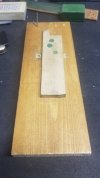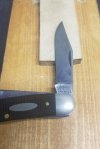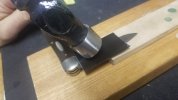- Joined
- Mar 25, 2005
- Messages
- 1,644
Great topic!No to the above! You'll snap your blade. Watch this video. This is a simple process. I dont have a mallet like he has so I put a piece of gorilla tape over the blade and use an 8 ounce peening hammer.
I'm always dissappointed by off-centering on a new knife.
I wish that video was better produced and the guy talked through what he was doing.
I'll have to watch it a few more times to figure it out.
Thanks for posting it.




